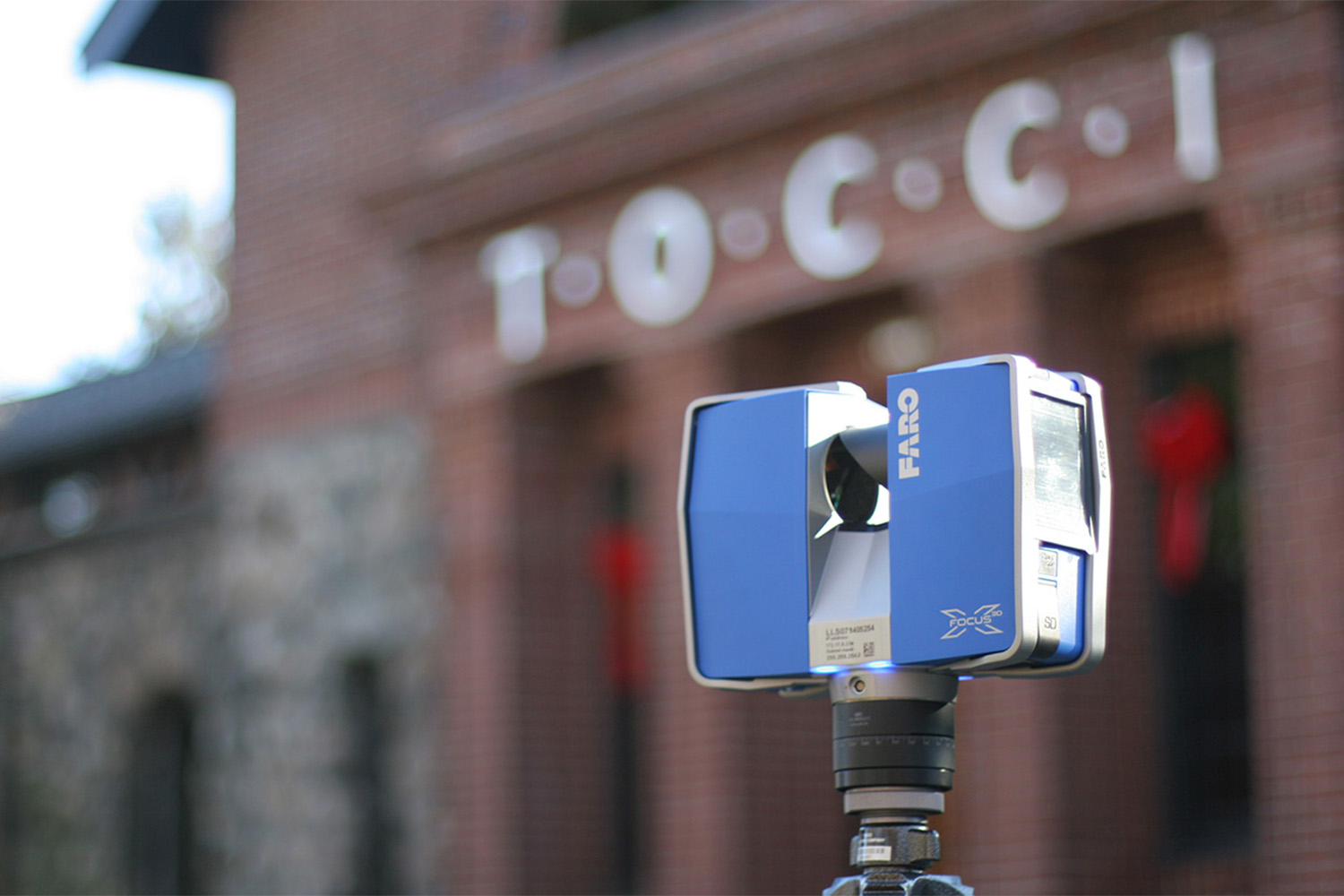The Power of Laser Scanning
Share

The points below are an excerpt from a conversation last week between VJ Tocci and Lila Tocci regarding the benefits of using laser scanning.
*A quick note from VJ: Most of the advantages addressed in this conversation are in the context of historical restoration however they also apply to non-historic structures. My intent was to merely provide a quick and easy understanding of the importance of laser scanning. In many ways, I barely touched on the possibilities that we will soon be discovering as we put our recently acquired laser scanner to use on several active construction projects, including our own building (see a multi-layered scan of Tocci’s corporate headquarters above).
- Design Advantages – Laser scanning allows the architect to verify their models or existing drawings with the actual data, and precisely locate walls, partitions, roofs, windows, sills, etc. It allows all parties to see possibilities and obstacles to the new design, particularly in complex spaces, and provides a baseline of how to coordinate around such obstructions (eg. installing mechanical duct lines). Potential structural concerns for deflection on trusses or beams can be assessed by engineers and thereby addressed during pre-con so they are included in the construction award process (not as change orders). Photo-level quality images provide clients and designers the opportunity to SEE new fixtures and other introduced elements in their space during the design stage.
- Construction Advantages – Laser scanning provides the builder with exact existing information, so replacement windows are ALREADY measured for the supplier. The door entrance size and arched spring line are known, and the damaged brick in a corbelled arch can be visually identified when askew. I can go on and on – but the advantages of SEEING the problems are so much more powerful than a two-dimensional drawing that tries to “describe” a problem. This means that when we price the project, it is precisely priced and saves the need for interpretation. Doubt and confusion are reduced (dare I say eliminated?). The issues are readily visible in the model for all during the pricing effort so correct committed pricing is achieved. As-builts, shop drawings, etc. are far easier since a large portion of this effort is to replicate what already exists. Review and approval of submittals are speeded up as less “guesswork” as to how the product will look in the finished space is necessary.
- Owner and Historic Document Advantages – Laser scanning provides an existing photo-level accurate model of an iconic structure. This means that all future work on the building (which will unquestionably occur) can take full advantage of the model as a pinpoint accurate guide for the design and build. Replication of the building or portions of the building can be modeled on websites or placed on display within the building for people to enjoy. A better archival document cannot be created!